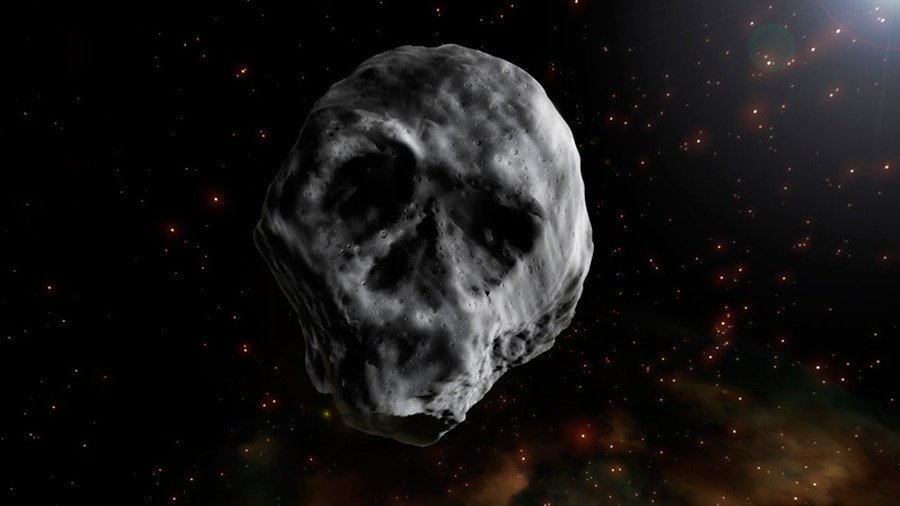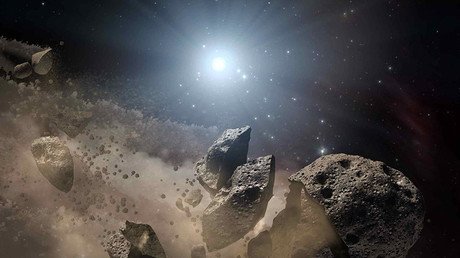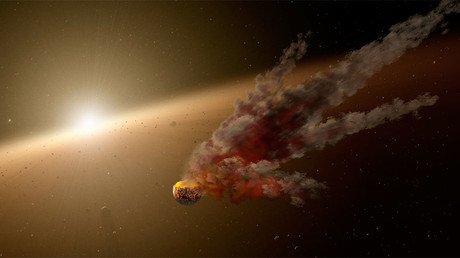Return of the space skull: ‘Halloween asteroid’ to fly past Earth in 2018 (VIDEO)

An asteroid in the shape of a ghoulish skull looks set to fly by Earth again next year, almost exactly 36 months after the creepy space rock was discovered floating through space during the Halloween period.
Dubbed 2015 TB145, or the ‘Halloween asteroid,’ the over 600-meter-wide rock hurtled past Earth on October 31, 2015. Radar images captured by NASA as it came within some 480,000 kilometers of our planet revealed some of the pronounced cavities and ridges that give the macabre looking boulder its distinctive skull-like shape.
See radar bounced from CA to W.Va off the #HalloweenAsteroid while it was going 22 miles/sec https://t.co/8CkqO4A2bxhttps://t.co/2cmzZ6B8AP
— NASA JPL (@NASAJPL) November 3, 2015
First observed on October 10, 2015 by researchers at the University of Hawaii, the asteroid is set to swing by Earth for a second run in the new year. According to Pablo Santo-Sanz from the Institute of Astrophysics of Andalusia, the asteroid’s previous encounter with Earth yielded some spectacular information about its characteristics and behavior.
READ MORE: Tesla Roadster is prepped for SpaceX mission take-off at Cape Canaveral (PHOTO)
“From observations from Spain, we discovered that this object’s most likely rotation period is 2.94 hours, in other words, this is the approximate length of its day, although we cannot rule out another possibility: 4.78 hours, another solution which is consistent with our optical data,” he said.
“The object measures between 625m and 700m, its shape is a slightly flattened ellipsoid, and its rotation axis was roughly perpendicular to the Earth at the time of its closest proximity.”
Santo-Sanz added that through light analysis of the object, the rock is “only slightly more reflective than charcoal,” while the rate at which it absorbs heat is consistent with that of other asteroids.
The Halloween asteroid is expected to fly by Earth next November. However, it will not come anywhere near as close as before for many years to come.
Not a messenger: Cigar-shaped ‘comet’ is a natural body from another solar system https://t.co/LEdUpSQd56
— RT (@RT_com) December 20, 2017
According to Thomas G Muller, a researcher from the Max-Planck-Institute who was involved in studying the asteroid, the subsequent “exciting” visit from the Halloween asteroid will come 71 years from now.
“The next slightly more exciting encounter will be around Halloween’s day in the year 2088, when the object approaches Earth to a distance of about 20 lunar distances. The encounter on Halloween in 2015 was the closest approach of an object that size since 2006, the next known similar event is the passage of asteroid 1999 AN10 on August 7, 2027,” he said.















